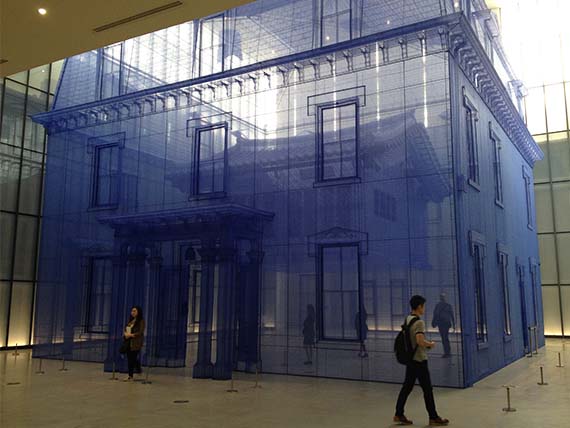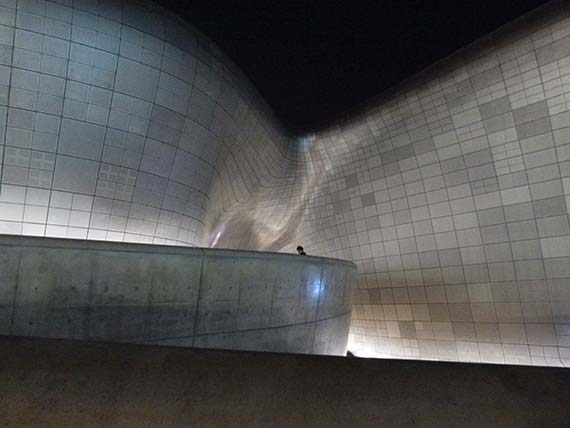
QAGOMA’s Asian and Pacific Art curators travelled the region last year to conduct research, meet with local artists and discuss projects for the upcoming Asia Pacific Triennial of Contemporary Art. In the lead-up to APT8 in November, each curator provides a brief synopsis of their experiences to date.
After two decades, the Asia Pacific Triennial of Contemporary Art (APT) follows a well-established pattern of research, planning and implementation. In the first year of the cycle, the previous edition is closely assessed, while initial ideas and directions for the next one are mapped. The second year involves intensive research and development: the artists are selected and invited, and the exhibition’s shape begins to appear; key elements, such as the cinema program, Kids’ APT and exhibition publication, are also sketched out. This, the third year is when the technical and logistical aspects come to the fore, and the whole organisation works together to realise this complex project.
During the second year, the curators and other members of the Gallery team travelled widely across the region to conduct research into its art and artists. These trips are a highlight of the APT process, enabling us to meet a wide range of artists, view new work, and gain insights into emerging art scenes as well as more established centres. They offer important background for understanding the contexts in which artists work and assist us in considering how to translate them into gallery spaces here in Brisbane. This research travel is made possible by funding from the Australia Council through its Visual Arts and Crafts Strategy. Through their regularity and sustained focuses, such trips maintain contact with what are now vast networks, as well as enabling us to build new relationships and follow artist’ careers closely over time.
Over the next days we offer first impressions by each member of the Gallery’s Asian and Pacific Art curatorial team of their travels as part of the development of APT8. Performance in its various guises, and the artistic uses of the human form as a motif for exploring various social, political and aesthetic concerns, provides a framework for the exhibition. This enables us to explore the deep affinities, strong differences and complex relationships that play out across this enormously diverse region.


Hong Kong, South Korea
In May last year, QAGOMA Design Manager Michael O’Sullivan and I attended Art Basel Hong Kong, which in a very short time has become the leading art fair in Asia. This was the second year that Hong Kong had hosted Art Basel, and it attracts galleries from across the Asia Pacific region, including many from Australia, as well as blue-chip dealers from Europe and the United States. While art fairs are not especially conducive to contemplation, they offer an excellent opportunity to gain a quick overview of the market as well as key developments and debates. There were pop-up displays of the architectural plans for the vast M+ museum complex nearby, for example, as well as a strong program of panel discussions involving leading curators and collectors from around the world. There was also a wealth of activity throughout the city, with galleries and studios putting on a range of exhibitions and events.
Following a hectic five days in Hong Kong, we moved on to Seoul, one of Asia’s, and the world’s, most exciting and sophisticated art centres. South Korea puts great stock in promoting its art and culture, from cinema to television to K-Pop, and contemporary art also receives strong support, with a large number of art museums (including the vast new inner-city branch of the National Museum of Modern and Contemporary Art), galleries, contemporary art spaces and studio programs, not to mention three significant biennial exhibitions. The scene is so vast and diverse it’s difficult to pin down broad tendencies, but there are a number of artists who use or reference highly advanced technology, as you might expect in the land of Nam June Paik and Samsung, and many who draw on the form of Korean monochrome painting (known as tansaekhwa). The ongoing standoff between North and South Korea, the legacy of the military dictatorship, and the struggle to reconcile tradition and contemporary life are also recurring concerns and lead to extraordinarily rich and compelling work. While Korean art has been a part of APT since its inception, it has not generally received the same attention as art from other parts of Asia, which is something we are keen to address in APT8 through major commissions by leading artists.
Russell Storer was Curatorial Manager, Asian and Pacific Art, Queensland Art Gallery | Gallery of Modern Art until November 2014. He has recently taken up the post of Senior Curator at the National Gallery Singapore.